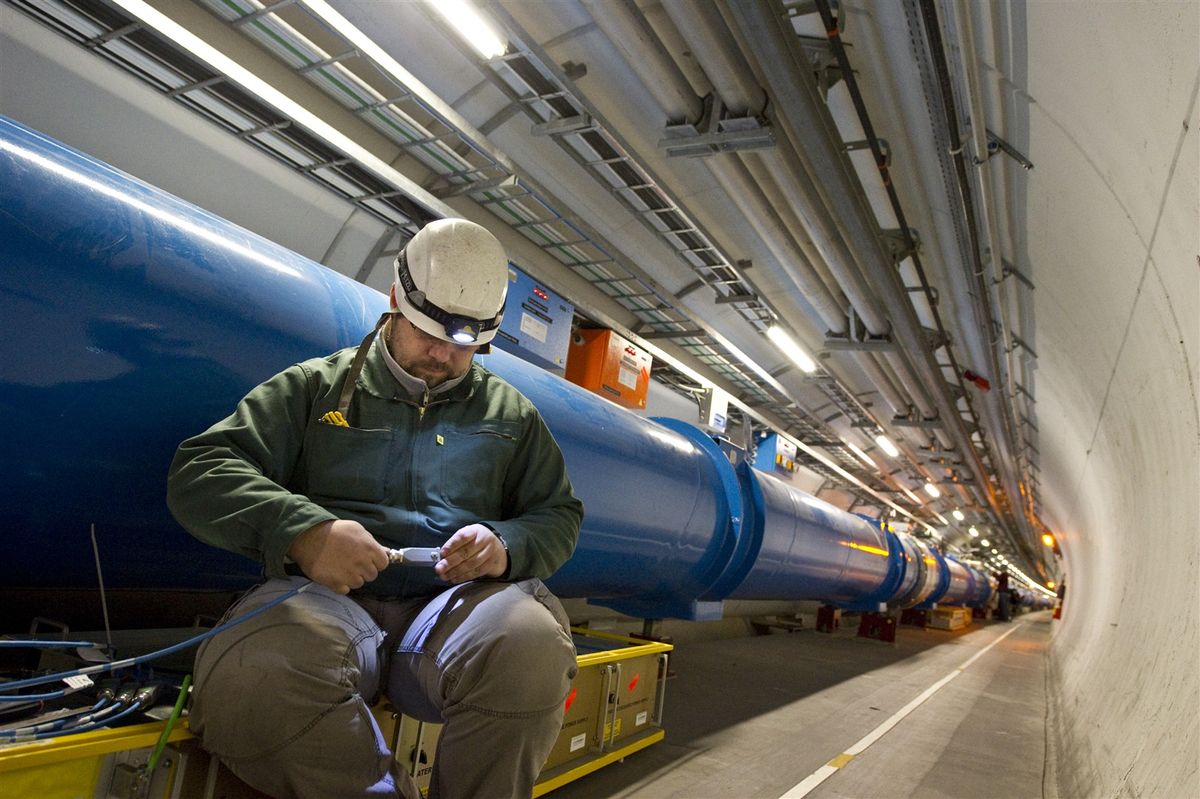Physicists: US Needs Its Own Atom Smashers

DENVER — The United States remains an intellectual center for scientific thought, but is on the brink of falling behind in attracting the brightest minds, physicists said Monday (April 15).
Speaking at the April meeting of the American Physical Society, researchers warned that the United States should commit to funding big science (and big science infrastructure) to remain competitive.
"We still have a very vigorous intellectual environment, but we cannot continue to be complacent," said Pushpa Bhat, a scientist at Fermi National Accelerator Laboratory in Illinois. Fermilab has 10 particle accelerators on-site, but one of the most powerful, the Tevatron, was shut down for budgetary reasons in 2011. [Image Gallery: Inside the World's Top Physics Labs]
Science funding is a major concern for U.S. researchers, both in the long term and the short term. Federal research grants have become increasingly competitive over the decades, and the sequester, a slew of across-the-board budget cuts signed into law at the beginning of March, has not helped. The sequester involves an effective 9 percent cut to non-defense spending, including research funding agencies such as the National Science Foundation. The 2013 cuts to science funding will likely come to $8.6 billion in 2013, according to the American Association for the Advancement of Science. NASA is coping with additional cuts.
Physicists often require major facilities to conduct their atom-smashing research — think the 17-mile-long (27 kilometers) Large Hadron Collider (LHC) on the French-Swiss border, which recently revealed the Higgs boson, a long-sought particle predicted by the dominant theory of physics, the Standard Model. Researchers are now working to learn more about the properties of the new particle.
"We have more Americans on the experiment than any single nationality," said Lisa Randall, a physicist at Harvard University and author of "Knocking on Heaven’s Door: How Physics and Scientific Thinking Illuminate the Universe and the Modern World" (Ecco Press, 2011).
"In fact," Randall said, "it's a great deal for us, because we didn't pay for the machine, but we pay for the experiments."
Sign up for the Live Science daily newsletter now
Get the world’s most fascinating discoveries delivered straight to your inbox.
But conveying American scientists' accomplishments abroad can be tough, particularly to Congress. And without state-of-the-art physics facilities in the United States, America will lose its edge in human expertise, said Kate Kirby, the executive officer of the American Physical Society.
"When they're here in the U.S., they're visible to the American public," Kirby said. The visibility allows for educational opportunities and public outreach, she said.
The expertise needed to build and maintain particle colliders and other high-tech physics equipment is also lost when big-science projects move overseas. Already, Kirby said, Chinese physicists use American Physical Society meetings to recruit the sharpest graduate students from China who trained in America to return to China to work, rather than stay in the United States.
Robert Zimmer, the president of the University of Chicago, said international collaborations like the LHC are a boon to science, but that the United States should remain competitive by investing in its own scientific facilities even as science becomes more cooperative across borders.
"You need to have capacity, you need to have people who have expertise," Zimmer said. "You're building human capital by having a broad engagement."
Follow Stephanie Pappas on Twitter and Google+. Follow us @livescience, Facebook & Google+. Original article on LiveScience.com.

Stephanie Pappas is a contributing writer for Live Science, covering topics ranging from geoscience to archaeology to the human brain and behavior. She was previously a senior writer for Live Science but is now a freelancer based in Denver, Colorado, and regularly contributes to Scientific American and The Monitor, the monthly magazine of the American Psychological Association. Stephanie received a bachelor's degree in psychology from the University of South Carolina and a graduate certificate in science communication from the University of California, Santa Cruz.









